Introduction
Did you know that geothermal energy is the new energy trend that could save us?
This is what experts say, and in fact this new form of alternative energy seems to be a trend that is on the rise that could mark a before and after in the future in the fight against climate change. It is the great unknown among the group of renewable energies, which is why it is often ignored, although it already existed and has been known since ancient times.
In this context, new projects related to this technology are currently being developed. There is renewed interest in this energy source as countries set renewable energy targets, including zero-emissions projects — dozens of countries have pledged to decarbonize their economies by 2050.
Geothermal energy has been used for thousands of years in some countries. It is simply thermal energy derived from the internal heat of the earth, contained in the rocks and fluids that are found under the earth’s crust. It can be found in shallow soil as well as several kilometers below the surface, and even lower down to extremely hot molten rock called magma.
Next, they explain what geothermal energy consists of, how it is produced and what the benefits would be.
What is geothermal energy?
When talking about geothermal energy, we talk about the heat that is found in the most superficial part of the earth and that can be exploited by man (between 3 to 6 km deep). For a geothermal resource to be exploited for the production of electric power; it is necessary that a large amount of thermal energy be stored and concentrated (T≥150 or C) in permeable rocks and close to the surface (1-3km) and that the geological conditions exist for the presence of a geothermal field, (Figure 1).
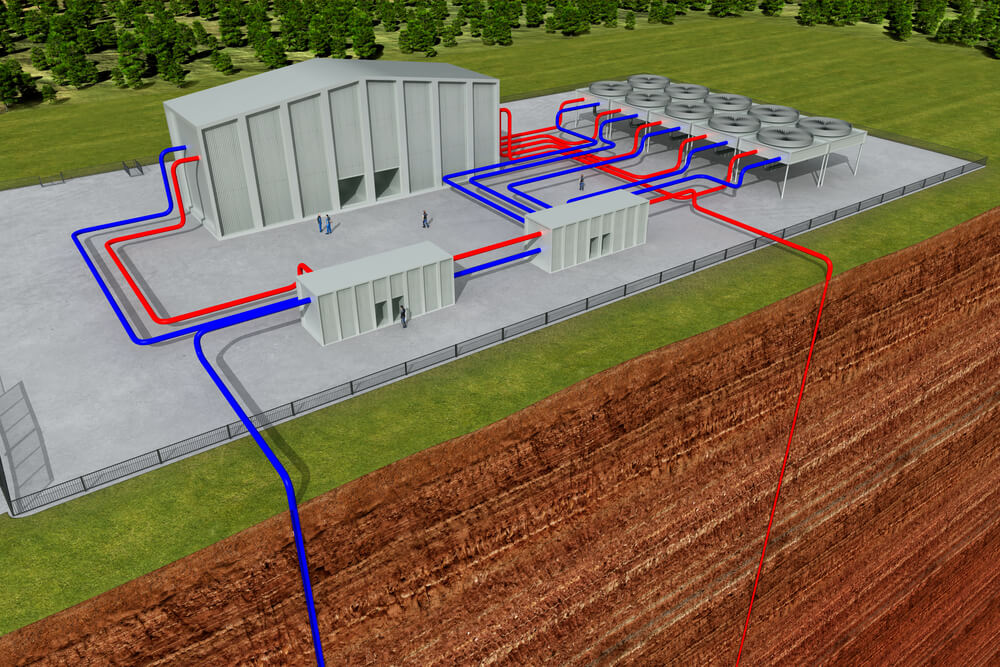
The core below the earth’s crust houses thermal energy, and the deeper it is below the earth’s surface, the hotter it is. Approximately 6,437 kilometers or 4,000 miles below the earth’s surface (Figure 2), it can reach temperatures of 4,200 degrees Celsius or 7,600 degrees Fahrenheit. A portion of that heat emanated from the Earth’s formation process around 4 billion years ago.
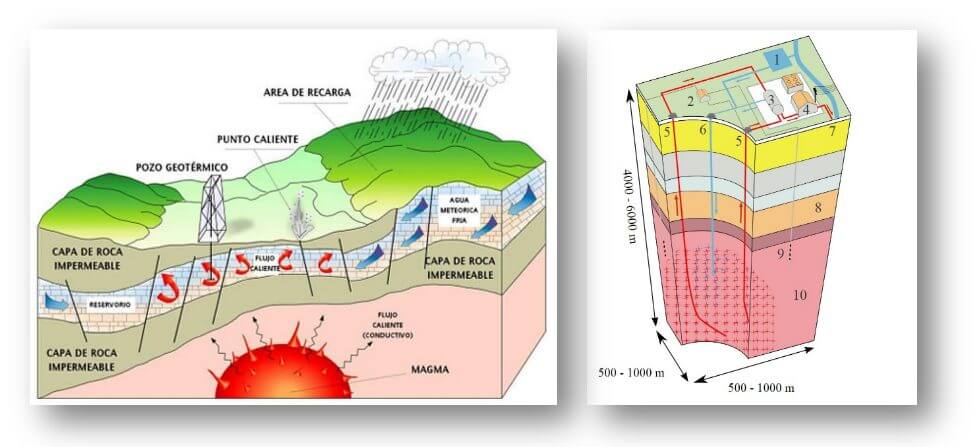
The remaining heat comes from the ongoing decay of radioactive materials below ground. The heat found within the core of the earth is so extreme that it melts rocks into what is known as magma; which is less dense than the rocks that surround it, and tends to rise through the surface of the earth. In some cases, pressure within the core forces magma out through vents, causing it to erupt to the surface, a phenomenon known as a volcanic eruption. However, in most cases, the magma does not come out of the earth’s crust. Instead, it heats nearby rocks, and the water trapped within the rocks.
A little history about geothermal energy.
Did you know that the first geothermal power plant in the world was built in the south of Tuscany, more specifically in Larderello, located in the province of Pisa, Italy?
Following the development of an experimental plant in 1904, Italian scientist Piero Ginori Conti invented the first geothermal electric power plant, in which steam was used to create energy to spin a turbine and demonstrate electricity generation (Figure 3).
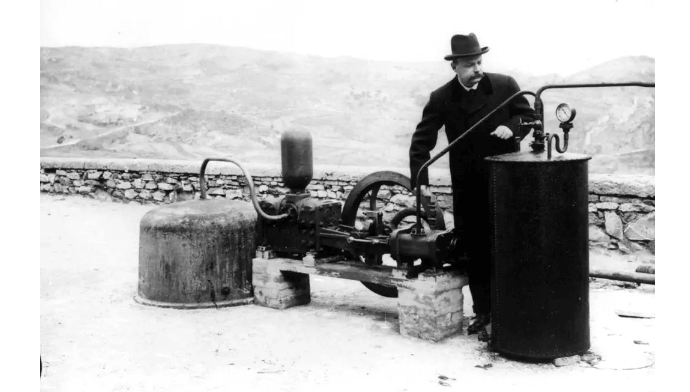
In 1911 this scientist decided to create the only geothermal power plant, and in 1913 the first 250 kWe plant was built, reaching 300 MWe in 1950 in the Landarello valley Diavolo deposit (Figure 4).
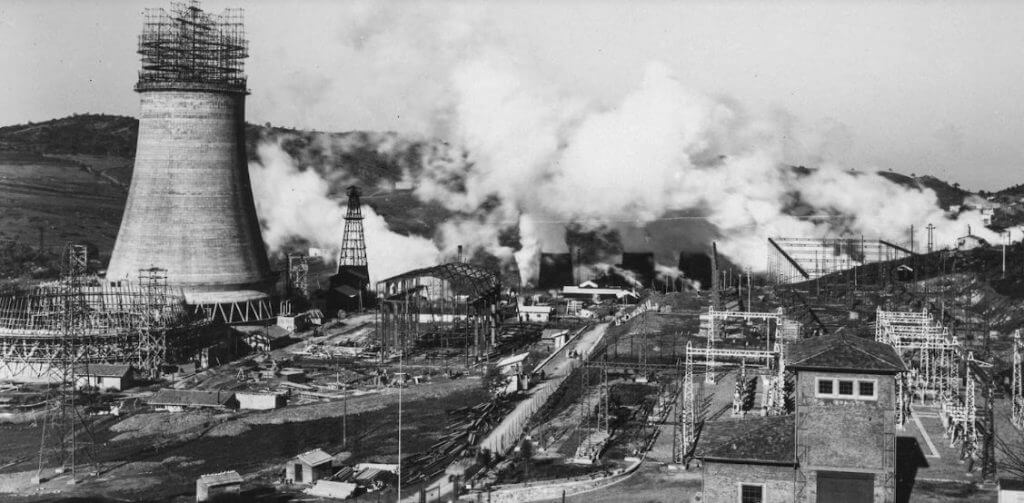
Thanks to the volcanic activity in this area, the plant produced around 250 kilowatts that were used for the operation of the Italian electric railway system. This volcanic activity consists of the presence of numerous smoke emanations that generate water vapor at high pressure and at temperatures that reach 200 o C.
Larderello currently produces 10% of the entire global geothermal electricity supply, some 4,800 GWh per year that powers one million Italian homes.
In 1958, geothermal production began in New Zealand, with the Wairakei field, in 1959 in Mexico, with the Pathe field, and in 1960 in the United States with The Geysers field.
In 1973, when the oil crisis began, many countries began to look for renewable energy sources and in 1980 geothermal heat pumps (BPH) began to gain popularity to reduce heating and cooling costs. The great expansion in the generation of electricity with geothermal energy occurs, successively incorporating Japan, Iceland and El Salvador, Indonesia, Kenya, Turkey and the Philippines (1980), Nicaragua (1985), Costa Rica (1995), Guatemala (2000), among others.
As the effect of climate change began to bear fruit, the governments of various countries joined together to fight against it, so the Kyoto Protocol was signed in Japan in 1997, establishing emissions targets for rich countries and requiring to transfer funds and technology to developing countries, 184 countries have ratified it.
Geothermal energy production
To produce geothermal electricity, wells, 1.6 kilometers deep or more, are drilled in underground reservoirs to harness steam and very hot water that drive turbines connected to electricity generators. Geothermal power plants generally harness heat below the earth’s crust and use it to generate electricity; Figure 5 shows the operating process of a geothermal plant.
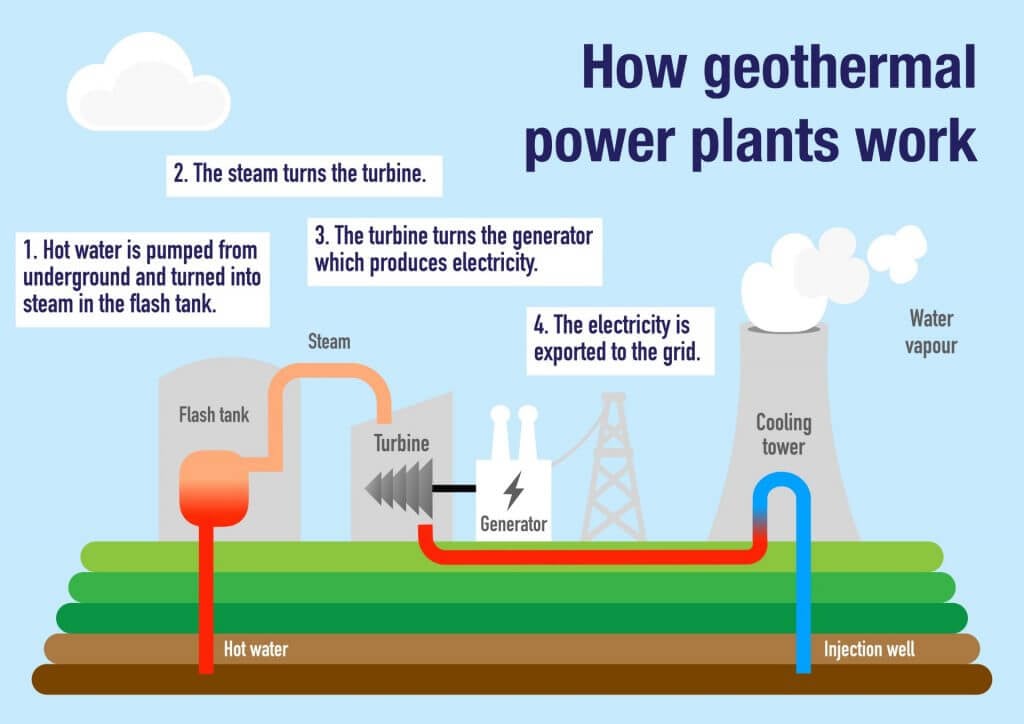
There are three types of geothermal power plants: dry steam, flash, and binary. Dry steam, the oldest geothermal technology, draws steam from fractures in the ground and uses it to directly drive a turbine. Flash plants extract deep, high-pressure hot water to introduce it into colder, low-pressure water. The steam resulting from this process is used to drive the turbine. In binary plants, hot water passes through a secondary fluid with a much lower boiling point than water, causing the secondary fluid to turn into steam, which then drives a turbine. Most geothermal power plants of the future will be binary plants.
Geothermal energy is generated in more than 20 countries. The United States is the world’s largest producer, and the world’s largest geothermal development is The Geysers, north of San Francisco, California. In Iceland, many of the buildings and even swimming pools are heated with geothermal hot water. Iceland has at least 25 active volcanoes and many hot springs and geysers.
Today less than 1% of the world’s energy is supplied through this type of alternative energy, but it is expected to supply between 10 and 20% of the world’s energy needs in 2050. Geothermal power plants currently operate in about 20 countries with high volcanic and seismic activity.
Advantages and disadvantages
It can be extracted without burning a fossil fuel such as coal, gas, or oil. Geothermal fields produce only one-sixth of the carbon dioxide that a relatively clean power plant fueled by natural gas produces. Binary exchanges do not release practically any emissions. Unlike solar and wind energy, geothermal energy is always available, 365 days a year. It’s also relatively cheap; the savings for its direct use can reach 80% compared to fossil fuels, but it entails some environmental problems.
Among the main disadvantage is the release of hydrogen sulfide (H 2 S), in low concentrations. Another concern is the disposal of some geothermal fluids, which may contain low levels of toxic materials. Although geothermal sites are capable of providing heat for many decades, certain locations can cool down over time.
If you want to know more about the new trends in alternative energy, don’t miss our next article.
References
- https://es.wikipedia.org/wiki/Central_geot%C3%A9rmica
- https://www.nationalgeographic.es/medio-ambiente/que-es-la-energia-geotermica

